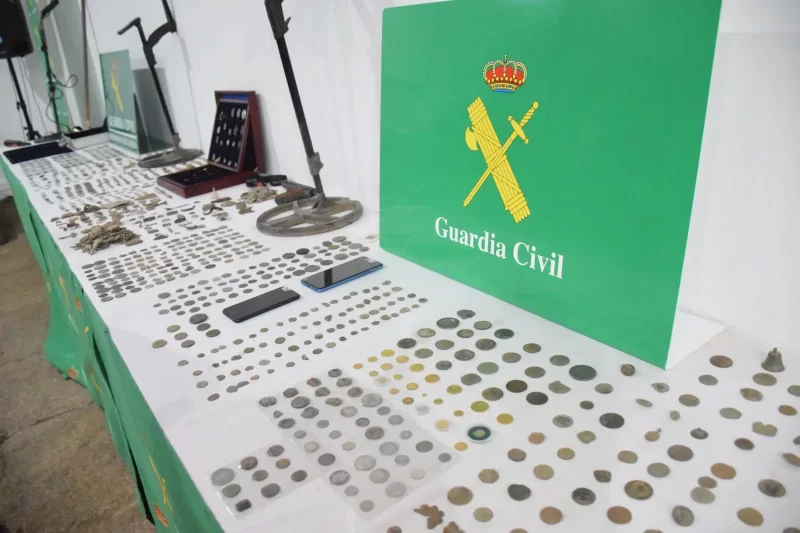80 Arrests and More Than 37 700 Cultural Goods Seized in Major Art Trafficking Bust
The ninth edition of Operation Pandora, an international operation targeting the trafficking of cultural goods, has led to 80 arrests and the seizure of 37 727 items including archaeological pieces, artworks, coins and musical instruments.
Codenamed Pandora IX and led throughout 2024, the operation involved law enforcement and customs authorities from 23 countries. It was coordinated by Spain (Guardia Civil), with operational support from Europol, INTERPOL and the WCO through its Regional Intelligence Liaison Office for Eastern and Central Europe.
Authorities also confiscated 69 metal detectors and 23 tools commonly used for illegal excavations, underlining the persistent threat of looting to cultural sites.
In total, 258 cases were reported by the participating countries. Many investigations are still ongoing, with further arrests and seizures expected.
Operational highlights
The Italian Carabinieri Command for the Protection of Cultural Heritage (TPC) in coordination with the Italian Customs and Monopolies agency (ADM) seized a painting attributed to renowned artist Jannis Kounellis during a joint border operation. Upon inspection, it was determined to be inauthentic. Had it been genuine, its estimated value would have been around EUR 100 000. In a separate investigation, the Carabinieri TPC seized more than 300 items, including coins, metal and ceramic fragments such as arrowheads and spearheads dating back to the Roman and Punic periods. These artifacts were being offered for sale on e-commerce platforms and were discovered in a private apartment.
The Spanish Guardia Civil dismantled a criminal group involved in archaeological looting in the province of Cáceres. Six individuals were arrested, and three others are under investigation. During the operation authorities recovered 2 500 archaeological, primarily Roman coins minted in the Celtiberian city of Tamusia. These artifacts had been looted from protected archaeological sites in the province of Caceres using metal detectors and were being sold illegally through social media platforms.
Also in Spain, the Guardia Civil intercepted a passenger attempting to fly from Palma de Mallorca to Germany carrying 55 ancient coins and a ring. A subsequent investigation led to an indictment for crimes against cultural heritage and plundering underwater wrecks and archaeological sites. In total, 64 objects of historical value and 1,576 ancient coins were confiscated.
In Greece, the Department of Cultural Heritage and Antiquities of Athens recovered five Byzantine icons. Acting on intelligence and using special investigative techniques, including an undercover officer, three individuals were arrested while attempting to sell the icons for EUR 70 000.
Ukrainian customs authorities seized 87 cultural goods that were being illegally transported out of the country to Poland, Moldova and Romania.
Cyber patrols uncover additional cases
In addition to on-the-ground actions, dedicated cyber patrols were carried out during the operation to identify potential illicit online sales of cultural property. These virtual investigations led to the opening of new cases, demonstrating how digital platforms are quickly becoming a channel of choice by traffickers to market and sell looted artefacts. A total of 4 298 cultural goods were seized as a result of the cyber patrols.













